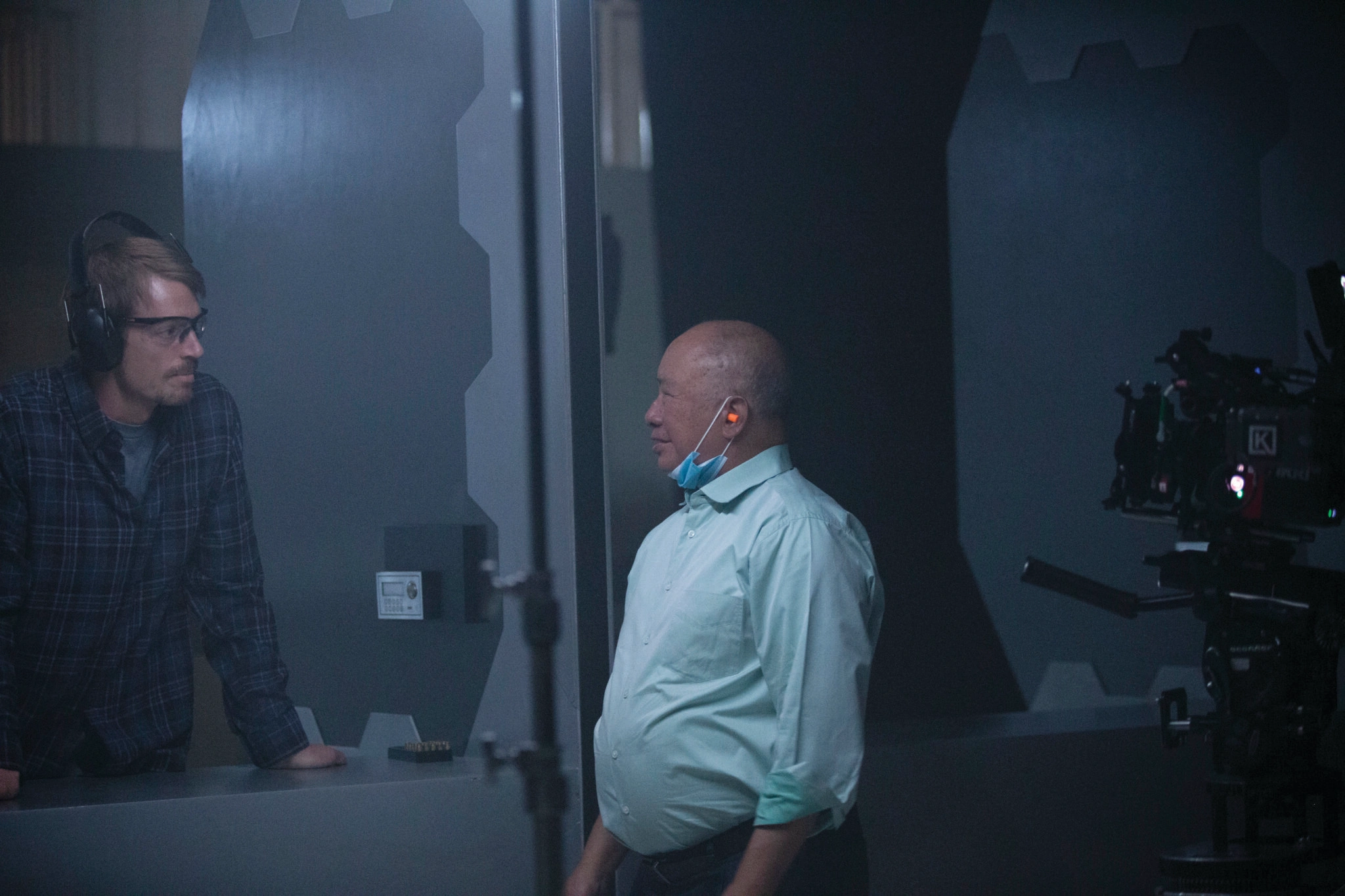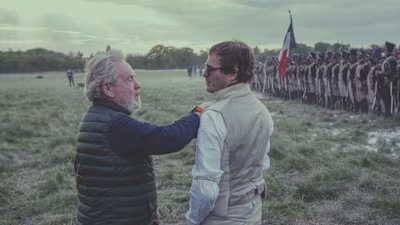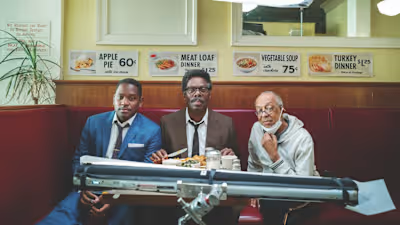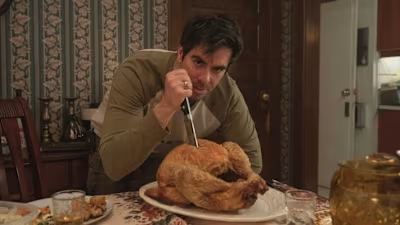John Woo: Things I’ve Learned as a Moviemaker

Silent Night. Photo Credit: Carlos Latapi
As John Woo celebrates his 50th year as a director in 2024, he can look back on an unrivaled action career that includes classics like The Killer, Hard Boiled, and Face/Off. But it wasn’t until this year, at age 77, that he made his first indie film, Silent Night.
In the past, he explains, “some difficulty always came from producers and the studio. You know, they never understand. They tell you, ‘Oh, I love this movie.’
“But actually, they didn’t know how I worked. They keep me in so much unnecessary trouble.”
Silent Night comes from, among others, Thunder Road Films, the production company behind the John Wick franchise, and is Woo’s first American project since 2003’s Paycheck. It is a Christmas revenge tale that stars Joel Kinnaman as Brian Godlock, a father who loses his son and voice from gang violence on Christmas Eve.
To emphasize Godlock’s loss, Woo uses almost no dialogue in the film. Instead, the director uses visuals, movement, and sound to tell his story. The film is a fascinating project for a director who has spent so much of his life creating unforgettable action sequences that transcend language, and even words. His skill as a visual storyteller of virtuosic set pieces explains his popularity from Hong Kong to Hollywood.
John Woo started out as a script supervisor for Singapore’s Cathay Studios and then became an assistant director at Hong Kong’s Shaw Studios. Bruce Lee’s films inspired him to make his own brand of action films, and his directorial debut, 1974’s kung-fu drama The Young Dragons, was choreographed by Jackie Chan. His run of Hong Kong hits eventually drew Hollywood attention, which led to his directing Jean-Claude Van Damme in 1993’s Hard Target.
He followed that with 1996’s Broken Arrow, starring John Travolta and Christian Slater, followed by 1997’s passionate, gloriously ambitious Face/Off, in which Travolta plays an FBI agent forced to switch faces with his nemesis, played by Nicolas Cage. In addition to staging wildly audacious action sequences, he presided over his stars hilariously hamming it up in mercilessly entertaining imitations of one another.
Woo’s subsequent films have included the American projects Mission: Impossible 2, with Tom Cruise, in 2000, and Windtalkers, againwith Cage,in 2002 — as well as the Chinese Red Cliff, released in two parts in 2008 and 2009, and the Chinese-Hong Kong production The Crossing, released in two parts in 2014 and 2015.
For our latest Things I’ve Learned as a Moviemaker, John Woo talks about his belief that today’s moviemakers have more freedom than ever, and suggests what to do if you don’t have a mentor. He also explains his commitment to making stunts secondary to story.—M.M.
As told to Joshua Encinias.
1. You don’t need a mentor to make movies — but you need to watch great movies. I don’t think it’s necessary to have a mentor. You can learn a lot from other great filmmakers. Martin Scorsese’s use of slow motion taught me how to use it to create an emotional moment. So I took him as my mentor, in a way, and also I took Sam Peckinpah and Stanley Kubrick.
2. Making a movie without dialogue forces you to use images and sound to tell your story. It’s hard to use a different technique or style to tell a story. For Silent Night, we only used visuals and sound, no dialogue, to make the audience understand the whole story. You do it with how you use the camera and the extra space to express ideas and emotions to move the audience.
You have to be very careful and precise. If you’re successful, you will hold the audience from the beginning to the end and keep them excited about everything without feeling they are missing something.

Silent Night. Photo Credit: Carlos Latapi
3. Today’s filmmakers have more freedom to make the movie you want than when I started.When I started, everything was so simple. I worked with old-fashioned people, but now I work with so many geniuses. We have much more freedom.
Silent Night was my first independent film. It felt great! That gave me more creative freedom. There were not many people on set. There was not much interference in my work. I could do my own work and shoot what I feel. It was pretty easy, even though there was not much time and never enough money. But we worked so freely. On a studio picture there are so many people. Too many voices.
John Woo on Fight Scenes
4. Young filmmakers who want to make action movies must know that a human story is more important than fight scenes. I always remember Akira Kurosawa, the Japanese master. He said that if there isn’t a human story or humanity in your movie, then the fight scene would mean nothing. You should have a good story before you have a good action sequence. The action is to serve the drama. Every single action should come from the drama and the emotion.
5. Communicating your vision is often the most difficult hurdle to overcome in making a movie.I think the most difficult thing is getting everybody to understand what I’m thinking, what I need, what I really want. In my work with some people, they couldn’t get the idea of what I’m thinking. So it is very hard. I try hard to make everybody understand, but I’m not good at language. Sometimes it’s hard to explain the meaning of a scene.
6. You have to find people who are all in sync because a good movie only has one vision. I find a team who’s familiar with my work, and then find actors who don’t need me to talk to them much. I give them some very simple instructions. I really need to work with somebody who understands my style.
The trailer for Silent Night, directed by John Woo.
7. There are no Chinese movies. There are no American movies. There are only movies.I have never made a Chinese film or an American film. In my vision, they’re always the same kind of movie. I don’t care if I’m working with a Chinese actor or an English actor. In my mind, the movie is representing me.
I’m telling a story. Most of the time, I prefer creating on set. I work with my instinct. Every shot, every piece of action, of performance, came from inside me. Instinct is very important to me and in China or America, I always work in the same way.
John Woo on Faith
8. If you bring your faith to set, let it inspire love, not rigid limitations.I was educated as a Christian when I was young, and what I’ve learned is it’s about love. Love your neighbor and love your enemy, love your friend, your family. That kind of thing is always on my mind and always in my vision and belief. So when I’m making a film, it’s pretty funny, I forget about my religion. I just feel like myself when I’m making a movie.
I never think what would the religion think about the movie. I wouldn’t give it any limitations that you should do that or you should not do that. Or that you should send some kind of a message about your religion. I feel pretty safe and pretty free while I’m making movies.
9. Make your actor more than a collaborator. Become their friend.The way I work with actors, first of all, I have to find a way to know everything about them. How they work, how they speak. When I’m thinking of a shot or anything for a scene, I feel like I’m working with my friend. If you’re working with your friend, we don’t have to say much.
Deep inside our hearts it seems to me like Nicolas Cage and I have known each other for a long time. Sometimes he comes up with an idea, like a joke. He always comes up with some good ideas, and I let him put them into a scene to try to help make it work better.
Silent Night is now in theaters and available on video on demand, from Lionsgate.
Main image: John Woo (L) with Scott Mescudi, aka Kid Cudi, on the Silent Night set. Photo by Carlos Latapi, courtesy of Lionsgate.
Share:
Read This Next
Like this project
Posted Dec 21, 2023
As John Woo celebrates his 50th year as a director in 2024, he can look back on an unrivaled action career that includes classics like The Killer, Hard
Likes
0
Views
14





